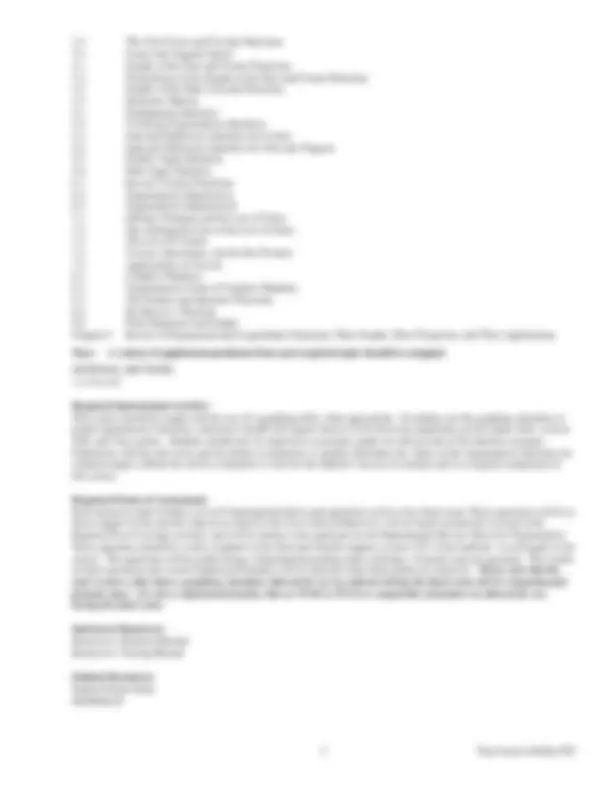



Study with the several resources on Docsity

Earn points by helping other students or get them with a premium plan


Prepare for your exams
Study with the several resources on Docsity

Earn points to download
Earn points by helping other students or get them with a premium plan
Community
Ask the community for help and clear up your study doubts
Discover the best universities in your country according to Docsity users
Free resources
Download our free guides on studying techniques, anxiety management strategies, and thesis advice from Docsity tutors
The math 1213 plane trigonometry course offered at northwest arkansas community college during the fall 2007 semester. The course covers topics such as trigonometric functions, graphs, identities, inverse functions, vectors, complex numbers, and polar coordinates. Students are expected to master various skills, including analyzing angles, finding trigonometric function values, graphing functions, and solving equations. Prerequisite: math 1204 with a grade of c or better. 3 credit hours.
Typology: Study notes
1 / 2

This page cannot be seen from the preview
Don't miss anything!


1 Trig Course Outline F
NORTHWEST ARKANSAS COMMUNITY COLLEGE Fall 2007 Division of Science and Mathematics Course Outline
Course: MATH 1213 Plane Trigonometry
Catalog Description: A survey of basic trigonometric concepts. Topics include trigonometric functions; graphs of trigonometric functions; trigonometric identities and equations; inverse trigonometric functions; the Laws of Sines and Cosines; area; vectors; applications of trigonometry; complex numbers; polar coordinates, equations, and graphs; and a review of exponential and logarithmic functions.
Prerequisite: MATH 1204 with a grade of C or better, or appropriate placement scores.
Credit/Contact/Load Hours: 3 credit hours, 3 contact hours, 3 load hours
Target Audience and Transfer: Trigonometry is required for students who will take Calculus I and / or College Physics. It is designed to transfer as 3 credit hours of Plane Trigonometry.
General Course Objectives: Upon successful completion of this course students should exhibit mastery of certain knowledge and basic skills. These skills include, but are not limited to:
Required Text: Trigonometry, Eighth Edition. Lial, Hornsby, Schneider, Addison Wesley, 2005
REQUIRED CONTENT : Section Topic
1.1 Angles 1.3 Trigonometric Functions 1.4 Using the Definitions of the Trigonometric Functions 2.1 Trigonometric Functions of Acute Angles 2.2 Trigonometric Functions of Non-Acute Angles 2.3 Finding Trigonometric Function Values Using a Calculator 2.4 Solving Right Triangles 2.5 Further Applications of Right Triangles 3.1 Radian Measure 3.2 Applications of Radian Measure
2 Trig Course Outline F
3.3 The Unit Circle and Circular Functions 3.4 Linear and Angular Speed 4.1 Graphs of the Sine and Cosine Functions 4.2 Translations of the Graphs of the Sine and Cosine Functions 4.3 Graphs of the Other Circular Functions 4.4 Harmonic Motion 5.1 Fundamental Identities 5.2 Verifying Trigonometric Identities 5.3 Sum and Difference Identities for Cosine 5.4 Sum and Difference Identities for Sine and Tangent 5.5 Double-Angle Identities 5.6 Half-Angle Identities 6.1 Inverse Circular Functions 6.2 Trigonometric Equations I 6.3 Trigonometric Equations II 7.1 Oblique Triangles and the Law of Sines 7.2 The Ambiguous Case of the Law of Sines 7.3 The Law of Cosines 7.4 Vectors, Operations, and the Dot Product 7.5 Applications of Vectors 8.1 Complex Numbers 8.2 Trigonometric Form of Complex Numbers 8.3 The Product and Quotient Theorems 8.4 De Moivre’s Theorem 8.5 Polar Equations and Graphs Chapter 9 Review of Exponential and Logarithmic Functions, Their Graphs, Their Properties, and Their Applications
Note: A variety of application problems from each required topic should be assigned.
OPTIONAL SECTIONS: 1.2, 6.4, 8.
Required Instructional Activity: This course should be taught with the use of a graphing utility when appropriate. If students use the graphing calculator to graph trigonometric functions, instructors should still require them to write down the amplitude, period, phase shift, vertical shift, and 5 key points. Students should also be required to accurately graph two full periods of the function on paper. Familiarity with the unit circle and the ability to memorize or quickly determine the values of the trigonometric functions for common angles without the aid of a calculator is vital for the students’ success in calculus and is a required component of this course.
Required Forms of Assessment: Each instructor must include a set of 9 departmental final exam questions on his or her final exam. These questions will be in direct support of the specific objectives stated in the Core Course Objectives, will be based on material covered in the Required Text Coverage sections, and will be similar to the questions on the Departmental Review Sheet for Trigonometry. These questions should be evenly weighted on the final and should compose at least 15% of the students’ overall grade in the course. The questions will be graded using a departmental grading rubric utilizing a 10-point scale per question. The results of these questions and overall student performance will be reported when final grades are turned in. Please note that the only resource other than a graphing calculator allowed for use by students during the final exam will be a departmental formula sheet. It is also a departmental policy that no TI-89 or TI-92 or comparable calculators be allowed for use during the final exam.
Instructor Resources: Instructor’s Solution Manual Instructor’s Testing Manual
Student Resources: Student Study Guide MyMathLab